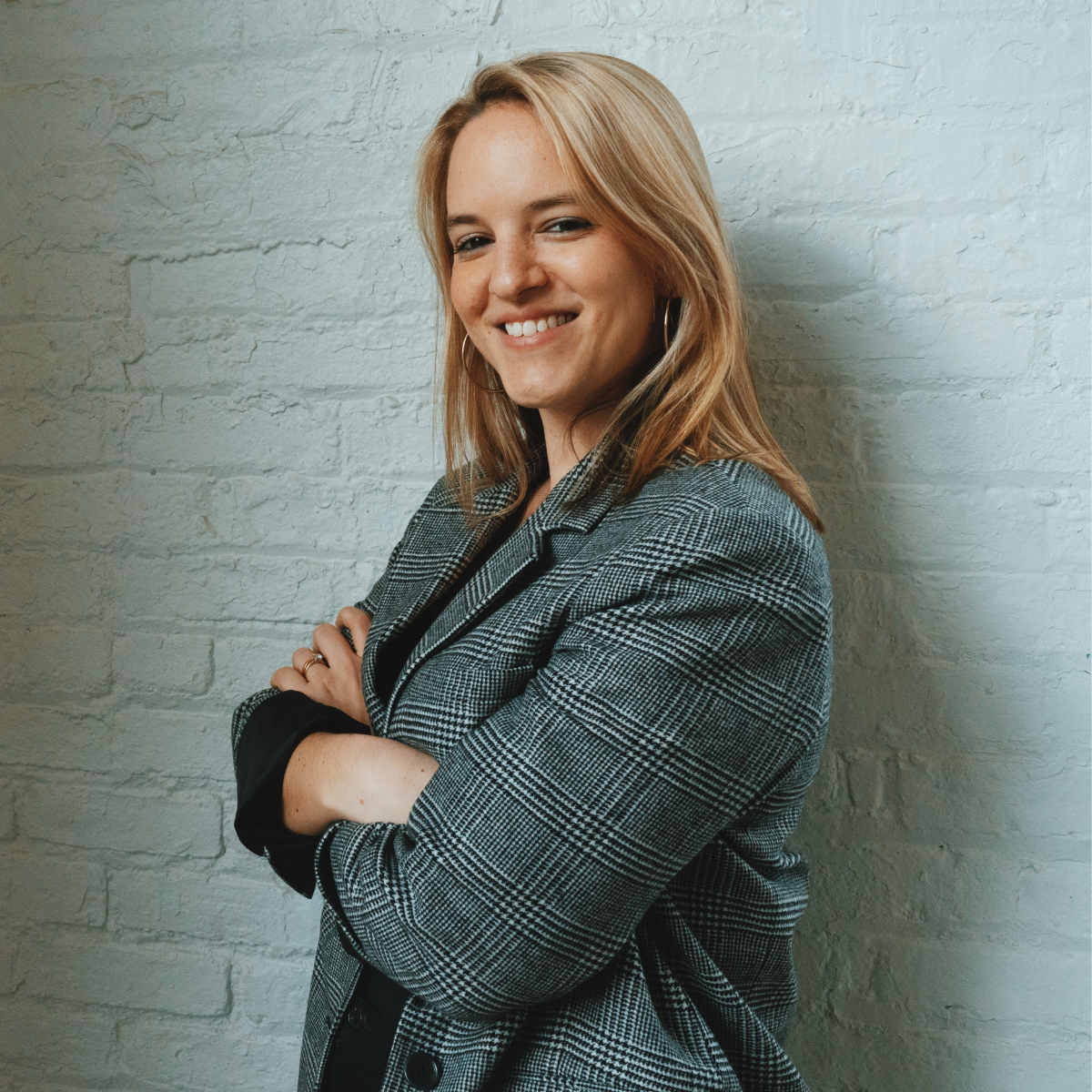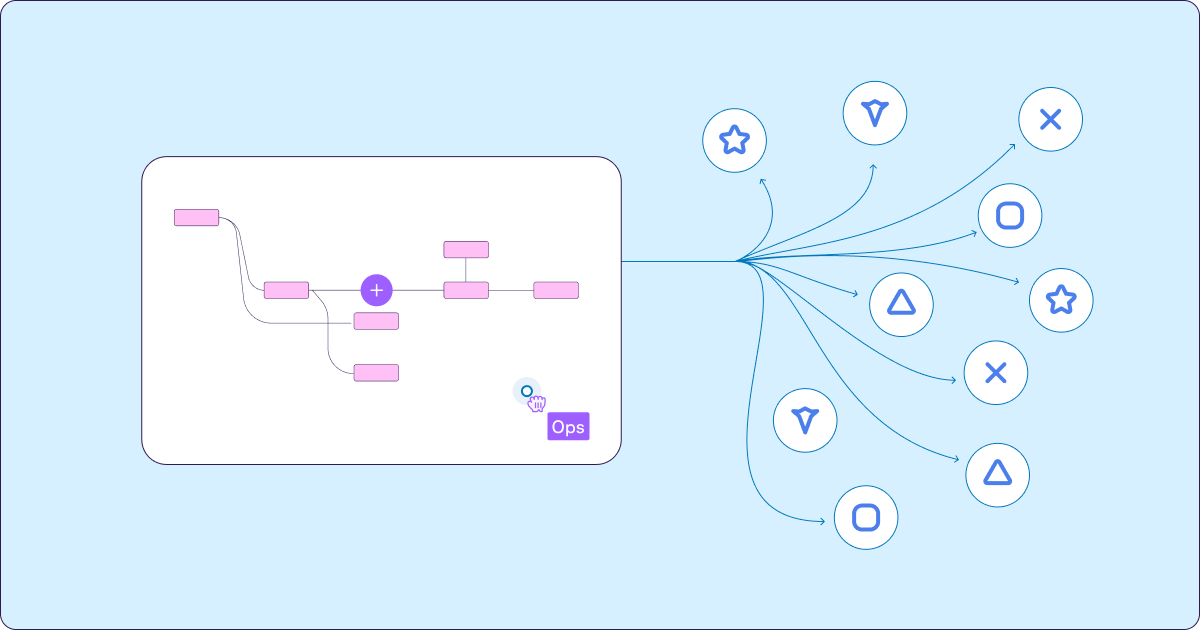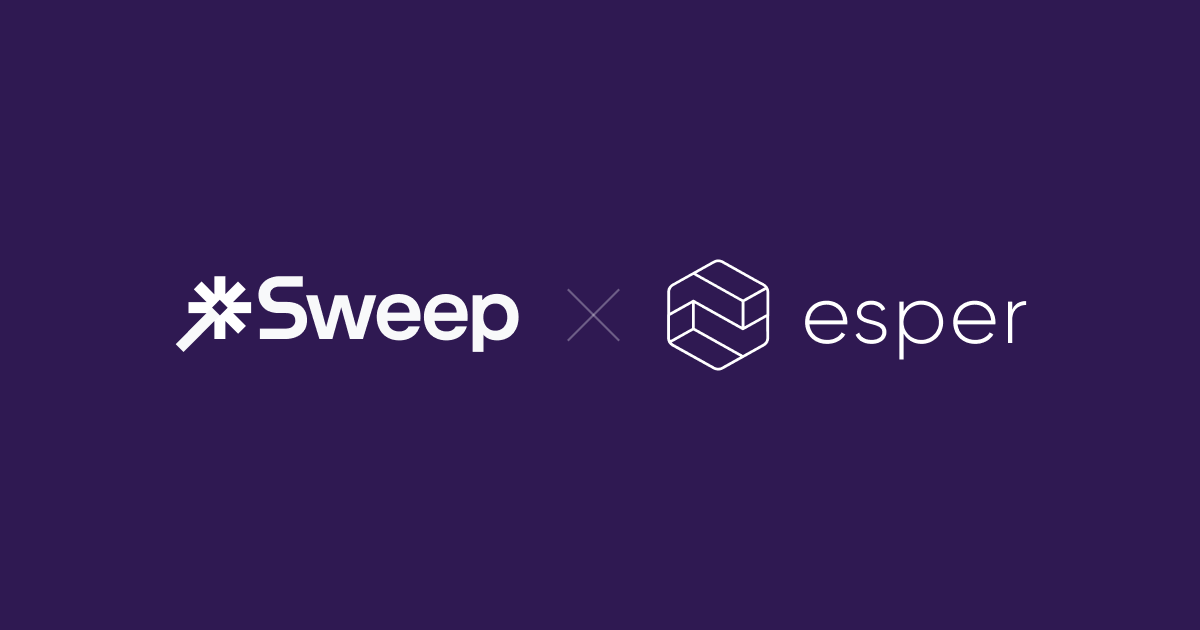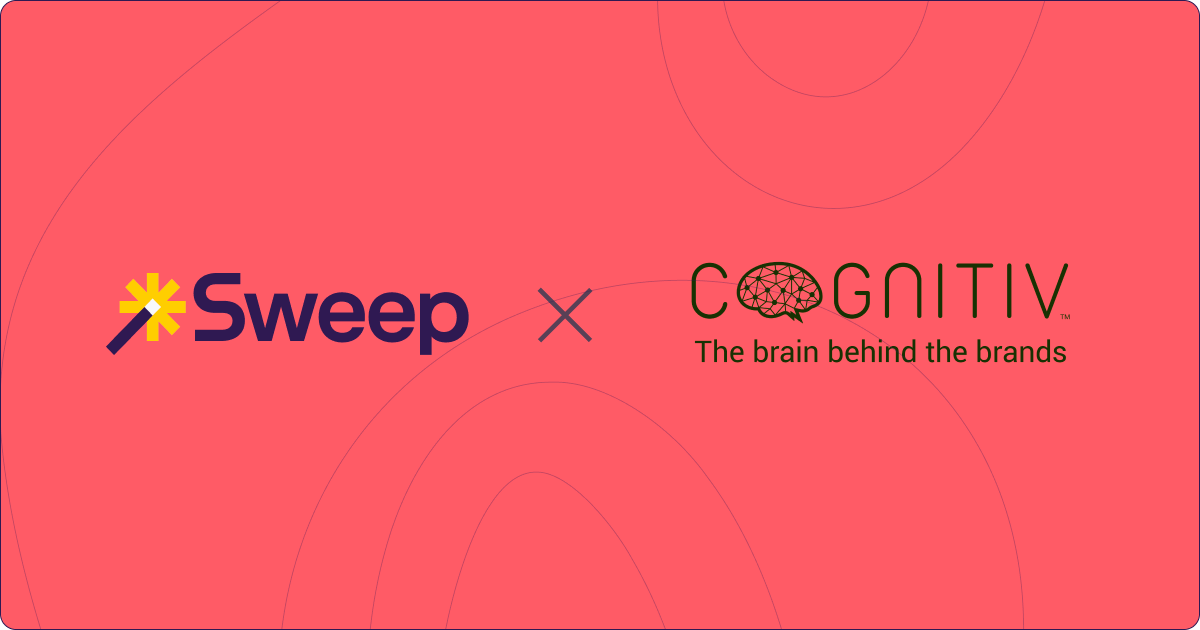
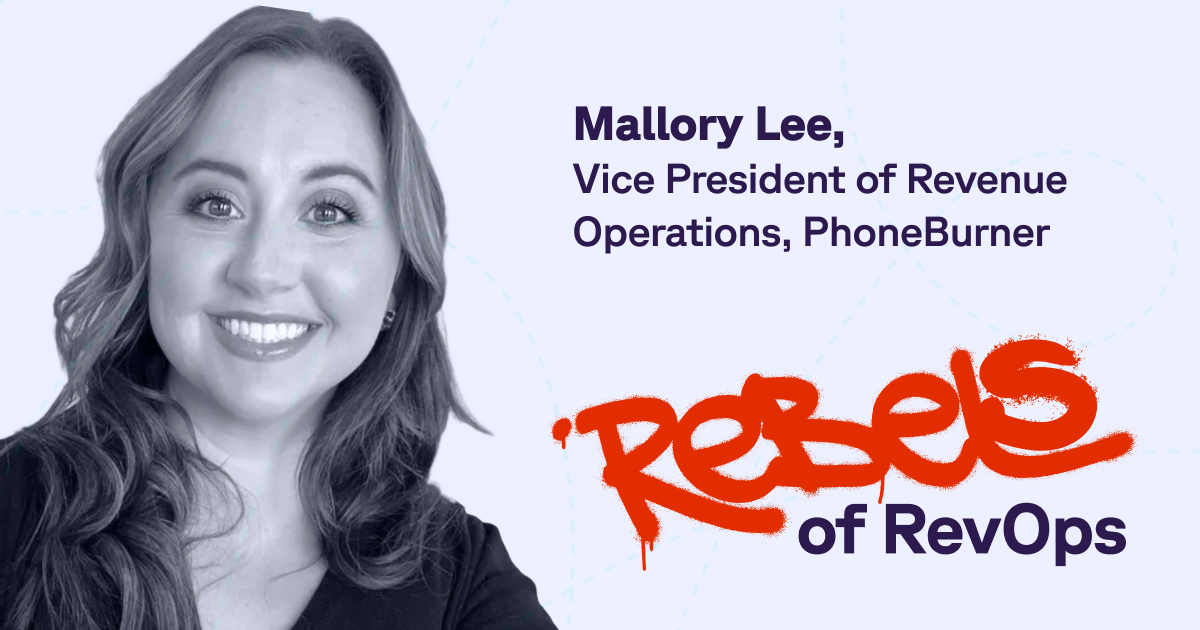
Here at Sweep, we're excited to be launching a new interview series highlighting people who said "hell no" to the status quo and established themselves as innovators in the Revenue Operations space. Some of these folks started in RevOps before it was a 'thing.' Others built teams with people from entirely different backgrounds or got creative with limited resources or adopted technology before it became popular. And some simply forged their own path forward.
In this post, we’re excited to feature Mallory Lee, Vice President of Revenue Operations at PhoneBurner and co-founder of The RevTech Review who shares why she prioritizes forecasting tools and how AI agents can unlock efficiency for smaller teams.
Sweep: What initially brought you to the world of Revenue Operations?
Mallory Lee: I came from Marketing Operations, so Sales and Marketing alignment was always very important to me. Yet, I still wanted to stay under the CMO and be the leader of a stand-alone marketing operations function. When I joined Terminus, they already had a unified RevOps team and I got to see first hand how helpful that was to the business. I was asked to lead that team and haven't looked back since!
Sweep: What is one "out of the box" idea you had while working in RevOps? Was it successful?
Mallory: Less is more. it always works.
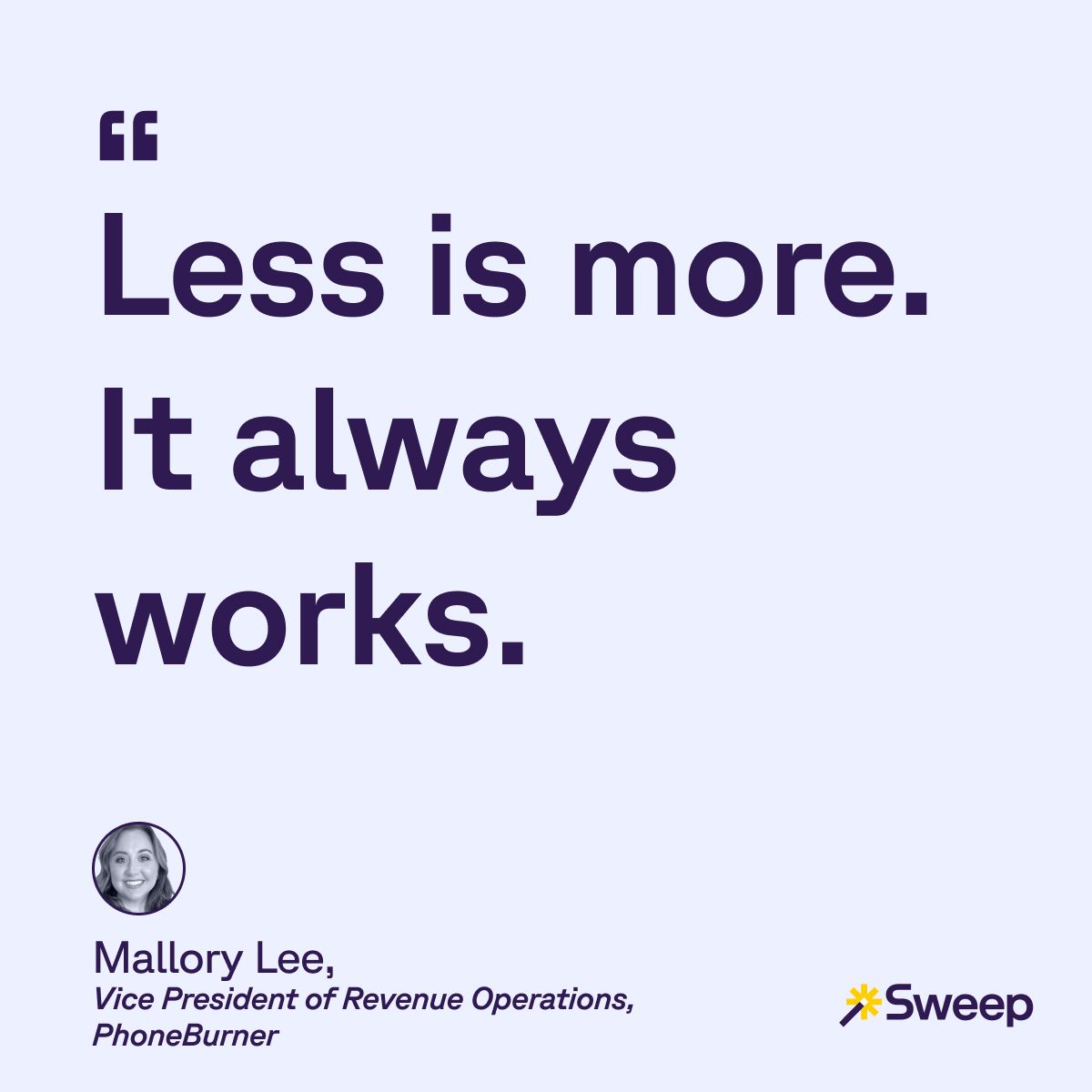
Sweep: How would you describe your Revenue Operations philosophy?
Mallory: My philosophy is that we need to strategically introduce technology with process, in service of getting DATA out of the process. That data should become an insight we use to improve the business. There has to be a strategy behind the tool and the way we use it, and when people overlook this part, they end up with technical debt that plagues their business.
Sweep: What was one tool or piece of technology you introduced to your team? How did you get buy-in? And what were the results?
Mallory: I would always put top priority on a forecast tool. Most recently I chose Gong, but I think there are many that work well. Get your forecast out of a spreadsheet and it will be taken more seriously, easier to use and report on, and more accurate in the end. Most of the forecast platforms offer insights above and beyond to what we can do on our own to see changes in the pipeline and get predictive insights. Use this for buy-in.
Sweep: What do you think will be the next BIG thing in RevOps?
Mallory: I think getting back to basics is the best big thing we can do. I'm seeing leaner teams, efficient growth, smaller tech stacks, and new "AI Agents" that can make a small team powerful. More and more we are seeing dedicated software for planning, analytics, and workflows in the RevOps world to make this possible.
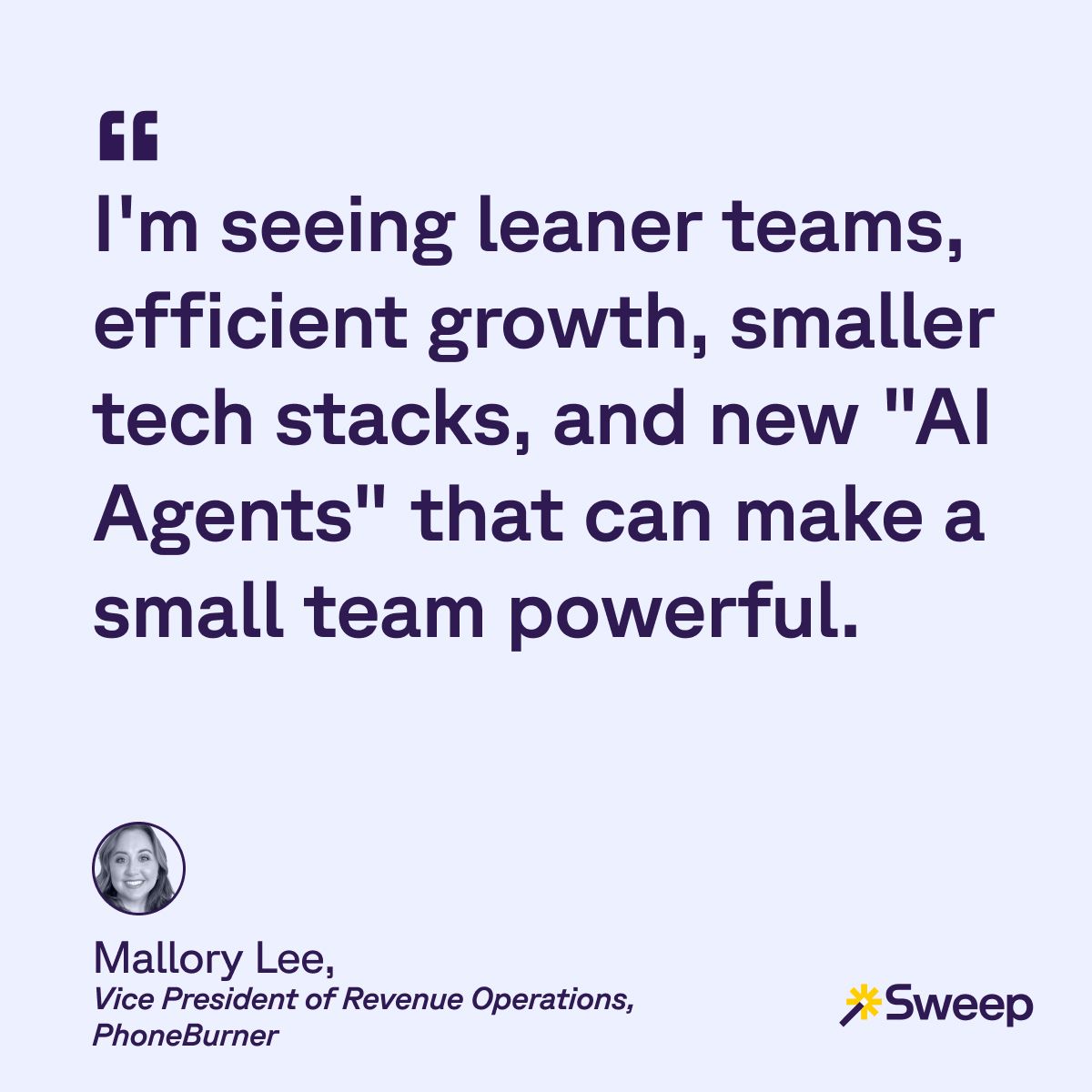
Sweep: Where do you think RevOps will be in 5 years? And where do you think you’ll be in 5 years?
Mallory: In 5 years I think many more of the RevOps teams out there will be moved from under the CRO. I think they'll report to either the CFO, COO, or CEO. We will see that we need to be more centralized in order to be a real thought partner to the leadership team.
Follow us on LinkedIn to see more stories from members of our RevOps community.
